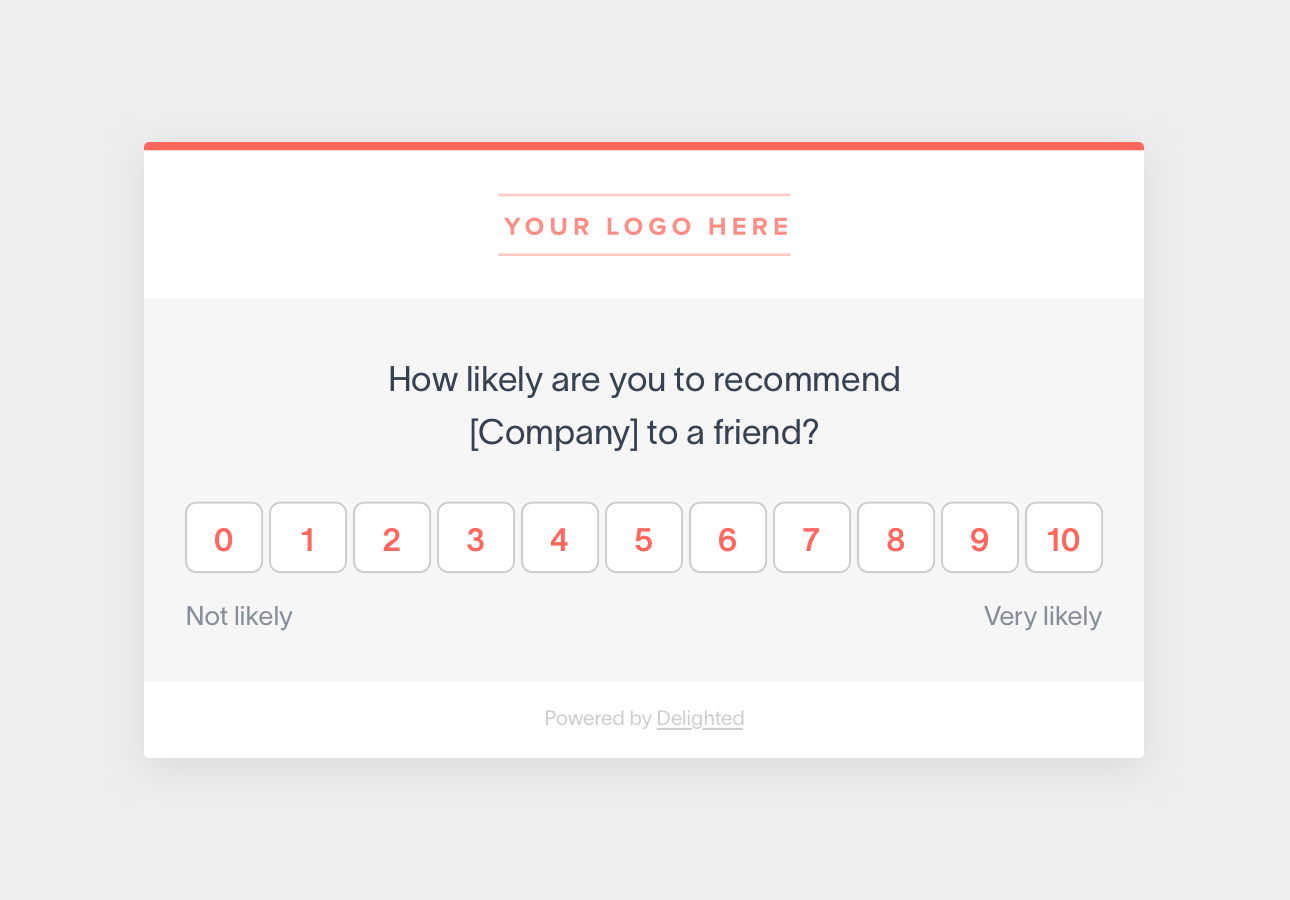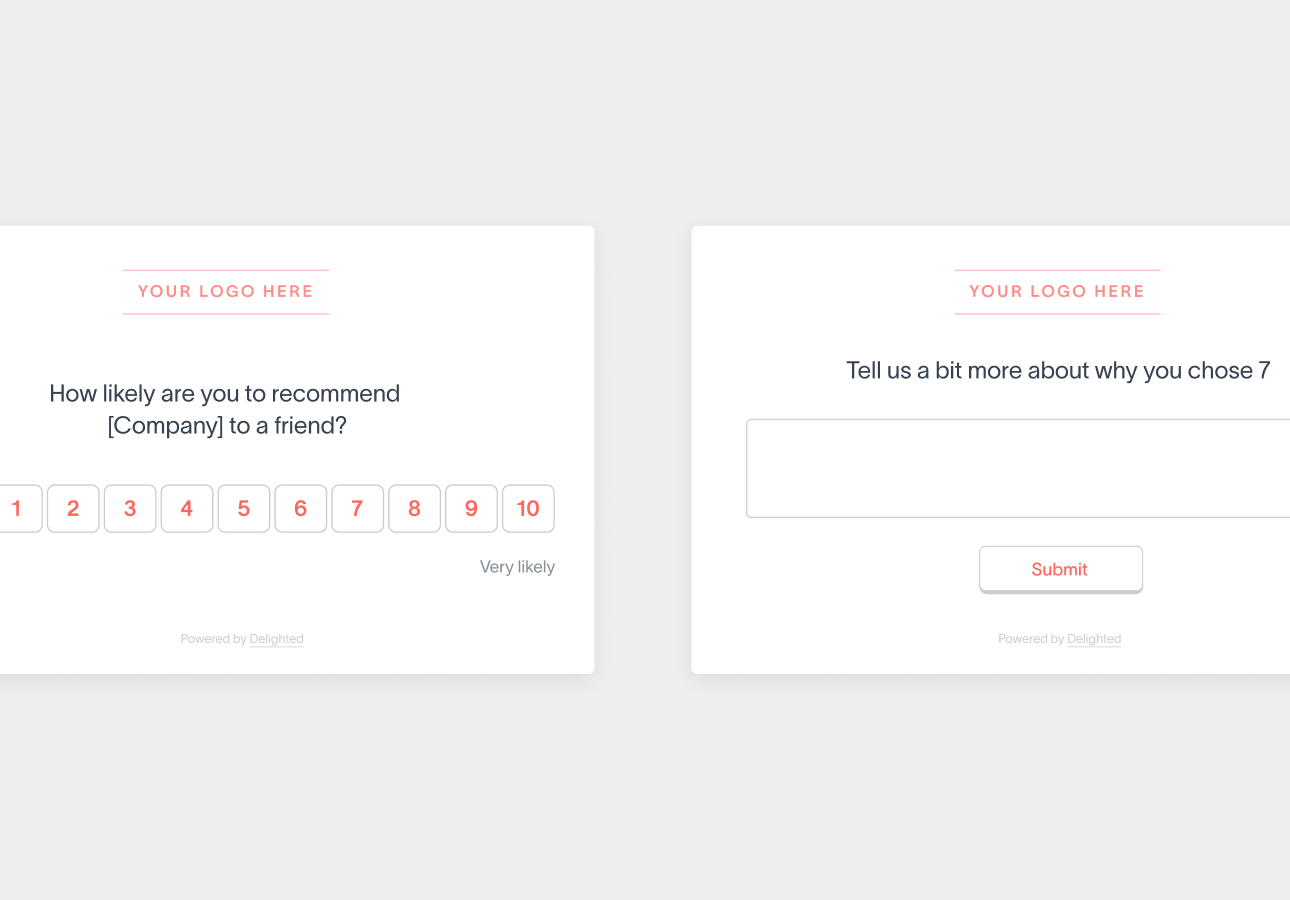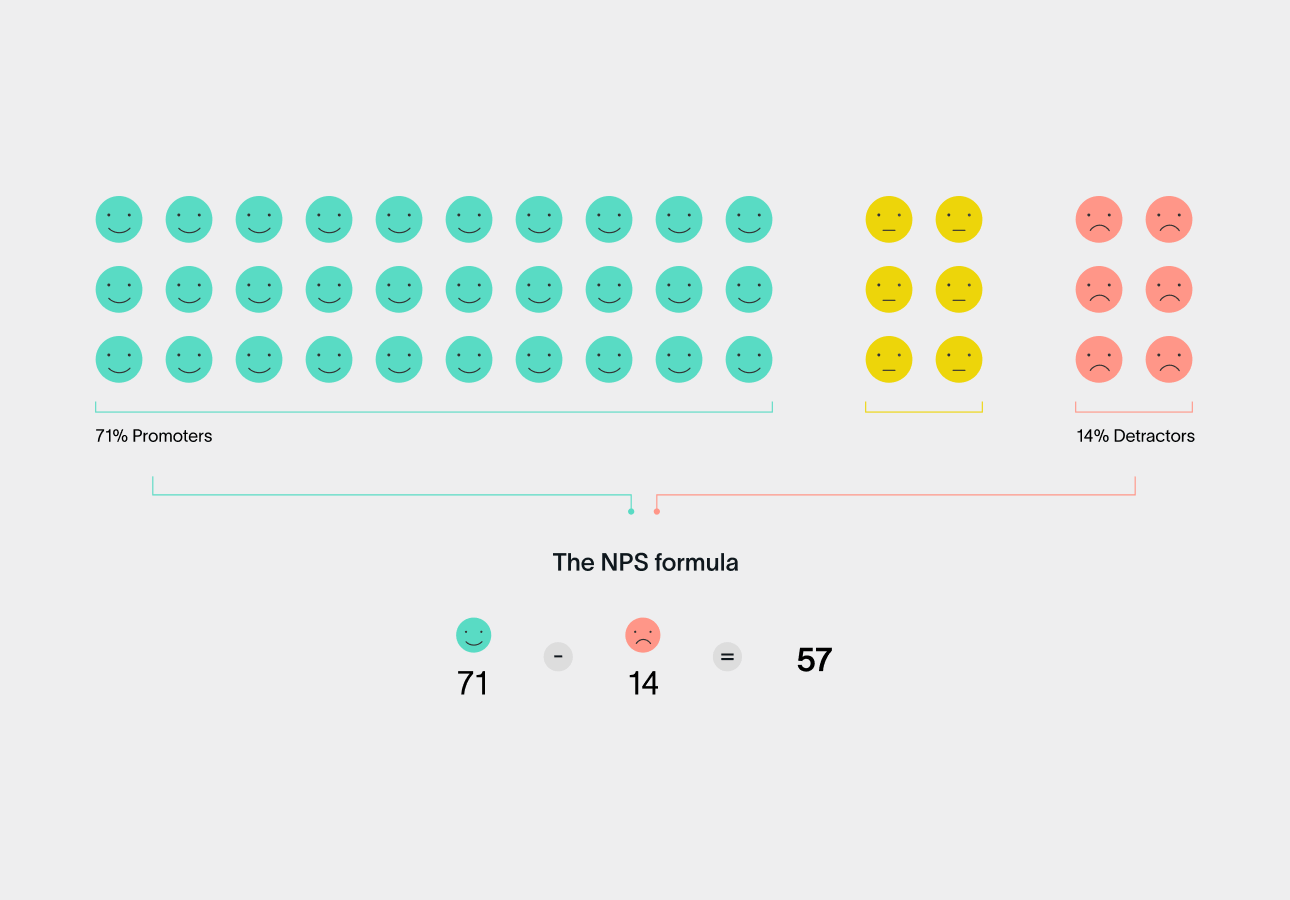An NPS survey is a simple two-part survey that consists of a rating question, and a free response follow-up. NPS, or Net Promoter Score, surveys help you quantify customer loyalty while also providing qualitative feedback to help you improve the customer experience.
Every second, 45 people answer a Delighted survey
Delighted powers 300+ million surveys a year

The first part of the survey asks the Net Promoter Score question: “How likely are you to recommend our company to a friend or colleague?” Respondents pick a numerical score between 0 and 10. The higher the score, the more likely they are to recommend you – the lower the score, the less likely.
The second part of an NPS survey is a free response follow-up question. This allows promoters, passives, or detractors to provide context for their chosen NPS scores. This is the true power of NPS surveys – hearing valuable feedback from your customers in their own words.

Join 75,000+ of the world's most beloved brands

The advantage of an NPS survey over a traditional long-form survey lies in its brevity. No one likes to fill out long surveys. As a result, NPS surveys, with their 2-question format, see vastly better response rates than traditional surveys. However, if you are looking for deeper insights, you can add optional follow-up questions to our NPS survey template. More robust survey platform tools allow these questions to follow conditional logic, so that customers receive unique sets of questions based on their initial rating. This type of survey setup also makes it easier to analyze your survey data and identify key drivers for customer satisfaction. To keep the survey as efficient as possible, limit yourself to 10 additional questions.
Because of its flexibility, NPS is one of the most effective customer satisfaction survey types you can implement. To learn more about the Net Promoter Score methodology and how it is different from other customer service survey questions, check out our Net Promoter Score guide.
If you’ve sent out a survey already, you can use our NPS calculator to calculate your NPS score.

“Delighted is the NPS product I always hoped someone would build. When I first saw the tool, I knew instantly that it could change the way companies measure and manage customer happiness.”
Fred Reichheld, creator of NPS and Delighted advisor
Sign up for Delighted – the best way to track customer satisfaction with NPS surveys.